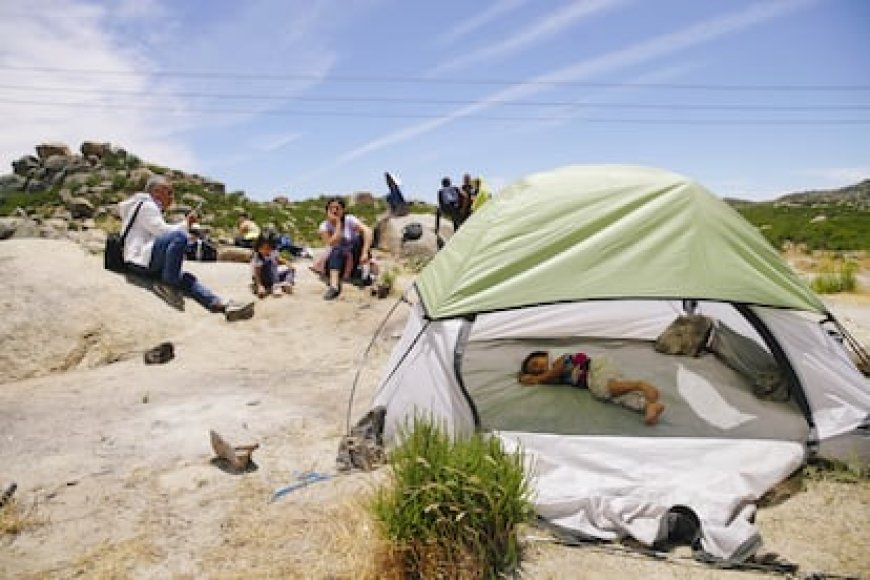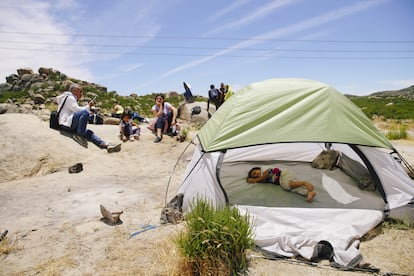The immigration crisis fuels child labor in the United States

The Reality of Child Labor in the United States
The job was to operate a machine that transforms sheet metal into auto components. The location was the Smart plant in Luverne, Alabama, which provides components for the Hyundai automaker. The person in charge of this task worked between 50 and 60 hours per week, for a minimum of six months. All this information is contained in a recent lawsuit filed by the U.S. Department of Labor, and the person doing the work was a 13-year-old girl. Sometimes you don’t have to travel to remote places to put a face to child labor.
Child Labor Violations and the Sustainable Development Goals
The lawsuit, a rare occurrence in these cases, opens a legal proceeding with Hyundai, the component manufacturer — Smart, which since 2023 has been called ITAC Alabama — and a contracting company, Best Practice Services. Hyundai says that child labor is against the company’s values and that it is unfair to include them in a lawsuit because of what a supplier does.
The reality is that this girl’s situation is not an isolated occurrence in the United States. The Department of Labor has verified an increase in cases of child labor in violation of federal law: the Fair Labor Standard Act of 1938, which includes child labor legislation. Cases involving 5,792 children nationwide were investigated last year, and hundreds of them were employed in hazardous occupations. The department has not made public the names or nationalities of the minors but Reuters and The New York Times investigations have revealed that in numerous cases those who end up working in factories are Latino migrant children, many of them arriving in the U.S. unaccompanied by adults.

The Vulnerability of Unaccompanied Immigrant Youth
“There are aspects of the status of unaccompanied immigrant youth that make them more vulnerable to these types of situations,” explains Nina Mast, an analyst with the Economic Policy Institute’s (EPI) Research and Analysis Network. “Because of their situation they may be forced to work in jobs that may have high wages but at the same time jeopardizing their health, safety, and education, and they don’t have a parent or guardian to ensure that what they are doing is appropriate.” Daniel Costa, EPI’s director of Immigration Law and Policy Research, explains that migrant minors face “all kinds of pressures” because of their precarious status, which leads them to accept difficult conditions. In addition, they have no incentive to report their illegal status because of the immigration situation they are in.
Addressing Child Labor Violations
Mast notes that there is a bipartisan consensus that fines for labor law violations are low and do not provide a deterrent. They are simply one more barely noticeable cost of doing business for many large companies. The laws “are important but relatively weak by labor standards, as well as outdated,” she notes.
Raising the financial penalties, however, is only one of the methods that can be updated or incorporated into the fight against illegal child labor. Another alternative highlighted by experts is to criminally prosecute these practices, as long as it is against the companies in question and “not mid-level managers who may also be vulnerable to abuse within the organization,” says Mast.
Tara Watson, an economist focusing on policy and social networking as well as immigration at the Brookings think tank, explains that fines are not enough and that there are grounds to consider criminality in cases where an 11-year-old child is hired to perform a dangerous activity. One of her proposals is to improve enforcement by the Department of Labor, which is complicated when it is underfunded and lacks sufficient personnel.
Costa explains that there are fewer than 800 researchers — a historic low since the 1970s — responsible for policing a labor market of 160 million people. “You could triple the number of staff in the department and still be below what is needed,” he notes. The funding level has not been updated from 2006 to 2022. Watson notes that $25 billion a year is dedicated to ICE (immigration enforcement), but barely $2 billion to protect labor standards and labor agencies. Updating legislation to 21st century realities is another pending issue, as well as reworking the list of hazardous work for minors. There are currently 17 such activities included on the list but it has not been updated for a long time, no matter how hard it has been attempted.
Mast believes that to encourage the reporting of these illegalities, the criminal liability of parents must be eliminated: “At the state level there are places where parents who are aware of the illegality of a child’s employment are criminalized and that creates a negative effect.” These specialists believe that families can be given monetary relief for reporting violations, something that currently is not the case as the money from fines goes into a general fund, although in recent months the Department of Labor has forced companies to turn over the equivalent of the benefit gained by child labor to the minors. This came about via one of the largest agreements ever reached in this area. The government and a Los Angeles chicken processor and distributor agreed to, among other things, subtract $1 million from the profits accrued from the oppressive labor of children under the age of 14, who used sharp knives to bone the meat.
Increasing the minimum wage and eliminating the sub-minimum depending on age, as well as supporting workers so they can protest working conditions and allowing anonymous reports of illegal circumstances via an app, are some of the avenues being pursued to bring about change.
Deferred Action
There was a key development in early 2023, when the Department of Homeland Security announced the deferred action process to protect migrant workers who were victims or witnesses to labor law violations from deportation. This measure already existed, but was formalized by the Biden administration. Even so, many of the measures that can be put in place now require congressional action and that makes it difficult to move forward. According to Costa, it is not only open to question whether Republican votes can be counted on in this matter, but also those of some Democrats.
Although there are certain modifications at the state level that strengthen some of the tools to curb child labor — such as raising fines or eliminating criminal liability for parents — Mast says that there are a number of attempts in some states “to legalize the violations that are occurring in some industries.”
Of particular concern is interest in eliminating work permits by an agency or department of education, or expanding risky jobs. In Florida, a law was initially passed that would allow minors aged 16 and 17 to work on ladders and roofs, which is prohibited at the federal level. Mast sees this as just one example among many: “It ultimately didn’t get implemented, but these are the kinds of changes they want to make.”
Sign up for our weekly newsletter to get more English-language news coverage from EL PAÍS USA Edition
SDGs, Targets, and Indicators
1. SDGs Addressed or Connected to the Issues Highlighted in the Article
- SDG 8: Decent Work and Economic Growth
- SDG 10: Reduced Inequalities
- SDG 16: Peace, Justice, and Strong Institutions
2. Specific Targets Under Those SDGs Based on the Article’s Content
- SDG 8.7: Take immediate and effective measures to eradicate forced labor, end modern slavery and human trafficking, and secure the prohibition and elimination of the worst forms of child labor.
- SDG 10.7: Facilitate orderly, safe, regular, and responsible migration and mobility of people, including through the implementation of planned and well-managed migration policies.
- SDG 16.2: End abuse, exploitation, trafficking, and all forms of violence against and torture of children.
3. Indicators Mentioned or Implied in the Article
- Number of child labor cases investigated by the Department of Labor.
- Number of children employed in hazardous occupations.
- Number of fines imposed for labor law violations.
- Funding level and personnel capacity of the Department of Labor for enforcement.
- Amount of monetary relief given to families for reporting violations.
- Minimum wage and sub-minimum wage policies.
Table: SDGs, Targets, and Indicators
| SDGs | Targets | Indicators |
|---|---|---|
| SDG 8: Decent Work and Economic Growth | Target 8.7: Take immediate and effective measures to eradicate forced labor, end modern slavery and human trafficking, and secure the prohibition and elimination of the worst forms of child labor. | – Number of child labor cases investigated by the Department of Labor. – Number of children employed in hazardous occupations. – Number of fines imposed for labor law violations. – Funding level and personnel capacity of the Department of Labor for enforcement. – Amount of monetary relief given to families for reporting violations. – Minimum wage and sub-minimum wage policies. |
| SDG 10: Reduced Inequalities | Target 10.7: Facilitate orderly, safe, regular, and responsible migration and mobility of people, including through the implementation of planned and well-managed migration policies. | – Number of child labor cases involving migrant children. – Impact of immigration status on vulnerability to child labor. – Criminal liability of parents for child employment. – Monetary relief for reporting violations. |
| SDG 16: Peace, Justice, and Strong Institutions | Target 16.2: End abuse, exploitation, trafficking, and all forms of violence against and torture of children. | – Number of child labor cases involving abuse, exploitation, or trafficking. – Criminal prosecution of companies involved in child labor. – Enforcement capacity of the Department of Labor. |
Source: english.elpais.com








